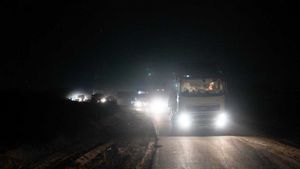
JAKARTA - The World Health Organization (WHO) on Monday said it was tracking a dozen cases of two new subvariants of Omicron COVID-19 to assess whether they were more infectious or dangerous.
The WHO has added BA.4 and BA.5, sister variants of the original Omicron BA.1, to their monitoring list. The UN agency has also tracked BA.1 and BA.2, which now dominate cases globally, as well as BA.1.1 and BA.3.
The WHO said it started tracking them because of their "additional mutations that need further investigation to understand their impact on potential immunosuppression."
Viruses mutate all the time, but only a few mutations affect their ability to spread or reduce previous immunity from vaccines or infections, or the severity of the disease they cause.
For example, BA.2 now accounts for nearly 94 percent of all cases sequenced and is more infectious than its sibling, but so far the evidence suggests that variant is less likely to cause severe disease.
Only a dozen BA.4 and BA.5 cases have been reported to the global GISAID database, according to WHO.
The UK Health Safety Administration (UKHSA) last week said BA.4 had been found in South Africa, Denmark, Botswana, Scotland and the UK from January 10 to March 30.
All BA.5 cases were detected in South Africa last Sunday.
But Botswana's Ministry of Health said Monday it had identified four cases of BA.4 and BA.5 in the 30-50 year age group who received the full COVID-19 vaccine. They are known to have mild symptoms.
The English, Chinese, Japanese, Arabic, and French versions are automatically generated by the AI. So there may still be inaccuracies in translating, please always see Indonesian as our main language. (system supported by DigitalSiber.id)












